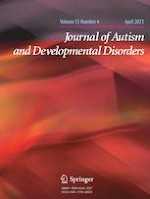14-07-2021 | Original Paper
A Self-Determination Theory Approach to Work Motivation of Autistic Adults: A Qualitative Exploratory Study
Gepubliceerd in: Journal of Autism and Developmental Disorders | Uitgave 4/2023
Log in om toegang te krijgenAbstract
The study explores work motivation of autistic adults through the lens of Self-Determination Theory (SDT). Twelve autistic employees (ages 28–47; 3 females) participated in semi-structured qualitative interviews about their work experience. Analysis combined inductive and deductive approaches, identifying motivational themes emerging from the interviews, and analyzing them according to SDT concepts. Two major themes emerged: (1) work motivation factors positioned on the self-determination continuum: income and self-reliance; a daily routine; social/familial internalized norms; meaning and contribution; and job interest; and (2) satisfaction of psychological needs at work, postulated by SDT: competence, social-relatedness, and autonomy and structure. Findings are discussed in relation to current literature, and practical applications are suggested for meeting the motivational needs of autistic employees and promoting employment stability.
